John Hurrell – 3 April, 2014
The repertoire of ‘expressive' mugging gags, some chimps included, flaunts mingled signals of extreme emotion as entertainment, unabashedly gimmicky diversions that compete for the viewer's attention. Though they are overtly ‘in-your-face' they are also delicately coloured and carefully put together: crassness and subtlety impeccably combined.
Cut out of large sheets of laminated marine-ply, and dribbly painted so that the sensuality, translucency and sheen of liquid oil paint is at maximum delectability, these squat, bulging and arabesque clusters of overlapping ogling, leering, smirking and winking cartoon heads ham it up on the Bath Street Gallery walls.
With nine exhibitionistic facial physiognomies rendered in paint and paintstik for an exhibition, plus six framed drawings, McLeod embraces a variety of graphic styles - displaying an interest in subject matter akin to Elizabeth Murray or Mark Braunias - and using variations that range from Jack Kirby to Ub Iwerks, from fragmented but wrinkled realism to flattened and silhouetted abstraction.
Compact and rotund in their organisation, this style of McLeod ‘cartoon’ is far superior to some of his other earlier variations - especially those from around 2011. Those were more vertically aligned (with a hint of anamorphic distortion), projecting out further on the floor into real gallery space, and not only were more literal (more body parts included) but more savage in their satire of say, lecherous old men and ingratiating, grimacing babes. There was more at stake than just form. They were cocksure on the moral high-ground, overstated (well, to me anyway) in their condemnation, and plain corny as a form of judgmental narrative.
Because I’m personally partial to flat picture-planes, clarity of shape and paucity of internal detail, and antagonistic to anything that smacks of histrionics, the ‘emptier’ paler paintings (often with streaming rivulets) out of this present show appeal most. Their modulated chroma, the lushness of McLeod’s coloured (often patterned) surfaces also attracts. The heads, a variety of compacted Medusa, with sprouting faces - mainly stacked up piano keyboard smiles, and heavy-lidded eyes - merge without neck or chin, being more puddles of worked-over, criss-crossed colour. These oval planes morph into undulating slices or oddly muscular blobs - punctuated by the occasional ear, nose, probing finger or tongue.
This repertoire of ‘expressive’ mugging gags, some chimps included, flaunts mingled signals of extreme emotion as entertainment, unabashedly gimmicky diversions that compete for the viewer’s attention. Though they are overtly ‘in-your-face’ they are also delicately coloured and carefully put together: crassness and subtlety impeccably combined. Most seem vaguely inspired by the classic disc-forms of Mickey Mouse (in a way that for example certain Denys Watkins paintings seem kickstarted by the shapes of Disney’s dog, Pluto), a riffing process with shape akin to that of jazz musicians stimulated by chord sequences from well known tunes.
Of course these paintings may have affinities with works by formalist artists like Elsworth Kelly or Leon Polk Smith, but such McLeod works deliberately avoid purity, tending instead to rejoice in the vulgar. There is something of the raucous spirit of hot rod decals here, say motifs as designed in the sixties by Ed ‘Big Daddy’ Roth, a proudly uncouth sensibility that in the name of mass appeal, would celebrate the visual equivalent of farting loudly in church. This type of work displays a very different sensibility from the McLeod who once contributed to the Auckland City Art Gallery’s The Grid: Lattice and Network exhibition of 1983, a contextually reactive personality who likes to go against the grain of what is popular at the time.
Emotionally direct as conglomerates of clichéd comic imagery, but also showcasing his manual paint application processes, the current work takes eyebrow-wiggling flippancy to be subject matter of the utmost seriousness. Paradoxically it is relational in the sense that it zeroes in on the individual semaphores of body language, the memes of two person encounter - such facial display being opposed to or distinct from transmitted oral exchange. It examines non verbal, but visual and still social, dialogue.
John Hurrell
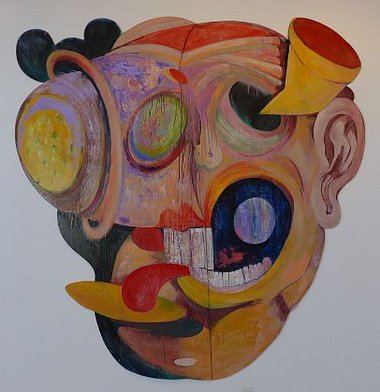

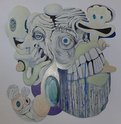
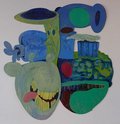


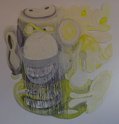
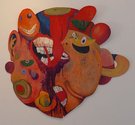
 Two Rooms presents a program of residencies and projects
Two Rooms presents a program of residencies and projects Advertising in this column
Advertising in this column



This Discussion has 0 comments.
Comment
Participate
Register to Participate.
Sign in
Sign in to an existing account.